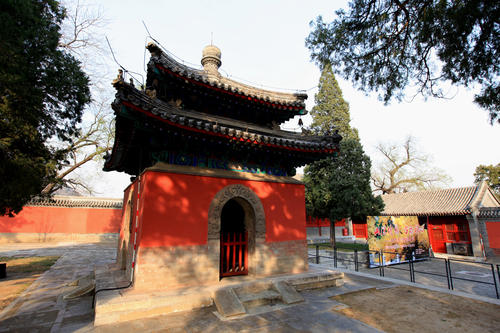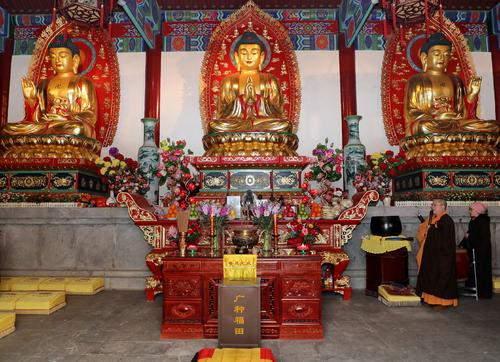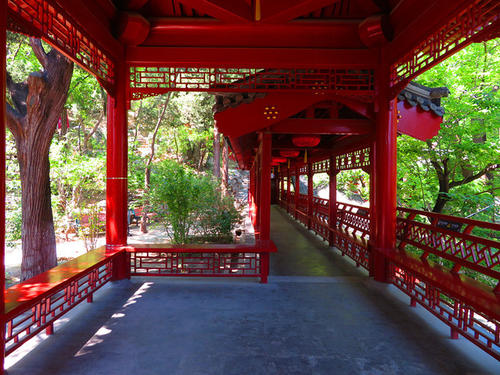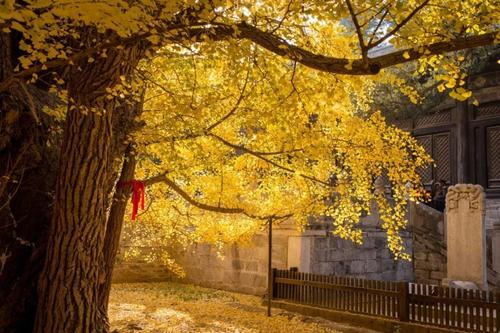Chinese Name: 大觉寺 Pronunciation: dà jué sì
Building Time: 1068
Best Visiting Season: All seasons
Recommended Time for Visit: 1-2 Hours
Address: No. 9 Dajuesi Road, Haidian District, Beijing
Occupied Area: About 6000 square meters
Building Function: Royal Buddhist Temple and Palace
Popular Activities: Magnolia and tea tasting festival and other Chinese cultural activities are held in Dajue Temple, and local people enjoy old ginkgo trees and magnolia flowers.
| Ticket Type | Price |
| Admission Ticket Fare | 20 yuan per person |
| Preferential Ticket | 10 yuan per person for college students with student ID; |
|
Free Ticket
(shall be identified by relevant certificates)
|
Primary and secondary school students; People over 60 years old; Disabled people; Active-duty soldiers; Military families, ex-servicemen and the dependants of martyrs; and fire-rescue personnel. |
| Free 200 tourists on Wednesday. |
| Park Gate | All-season |
| Opening Hours | 8:00-17:00 |
| Ticket Office Opening Hours | 8:00-16:30 |
| Closing Time | None |

The Dajue Temple is surrounded by hills, old trees, and streams. The secluded and beautiful scenery has been attracting people since the Liao Dynasty (916-1123) and the Jin Dynasty (1115-1234), which were founded by ethnic minorities in the north of China. Towering trees, three-hundred-year magnolia, and thousand-year ginkgo trees of this beautiful temple make it more appealing.
The Dajue Temple, also called the Temple of Enlightenment, is located at the foot of Mont Yangtai, Haidian District in Beijing, and was built in the Liao Dynasty. The temple faces east, different from the traditional Chinese architecture that is oriented south and north. Because Khitans, the northern nomadic people in the north of China, worshiped the sun. The east is where the sun is rising, and their traditional building preferred to face east.
The Dajue Temple is mainly composed of the temple buildings in the central section, the palace in the south, and monk’s dormitories in the north. As you enter from the temple gate, the Hall of Heavenly Kings may be the first site. You will see the statues of Maitreya and four Bodhisattvas. The Maitreya, also called the Receiving Buddha, can receive disciples of the West Pure Land, and the four Bodhisattvas represent fine weather and good harvest.

On both sides of the Hall of Heavenly Kings, there are the Bell Tower and the Drum Tower. The morning bell strikes the beginning of work and the evening drum indicates the end of the day, and they both ring 108 times. According to Buddhist scriptures, people were born with 108 kinds of annoyance, and after hearing the ringing they will get rid of these troubles.
The main hall, the Hall of Sakyamuni, built in the Ming Dynasty (1368-1644), is the second hall located in the middle section. A horizontal inscribed board carved “无去来处” which means the Buddhist exists everywhere, and the four characters were written by Emperor Qianlong (reign from 1736 to 1795).
The statues of Amitabha, Sakyamuni, and Medicine Guru Buddha are dedicated to the front of the main hall. Behind them, you may see three Bodhisattva--Manjusri, Avalokitesvara, and Samantabhadra. They stand for wisdom, mercy, and truth.

The Hall of Amitabha is the third hall in the middle section, and two stone tables are in front of the hall on both sides. They record the history of the Dajue Temple.
Behind the Hall of Amitabha, the Hall of Great Compassion is where the Buddhist scriptures are stored. At the back of the Dajue Temple, the highest site, are temple gardens. You may visit the Jialing Stupa, Holy Spring Tank, Dragon King Hall, etc.
Buddhism, as one of the five main religions in China, originally from Ancient India, has influenced Chinese culture, arts, architecture, language, thoughts, politics, and so on. The Dajue Temple is the epitome of Chinese Buddhism worship. You will not only enjoy the beautiful mountains, old trees, but also the Buddhist philosophy inspiring inner peace and history. Red charms of blessing and safeness are hung at the doorway of the Dajue Temple. If your family goes on a long journey, you can pray for safety and happiness for them with the red charms.

In 1068 during the Liao Dynasty, a philanthropist Deng Conggui built the temple, called it Qingshui Courtyard and carved Tripitaka (a Buddhist classic) on a stone tablet.
In the Jin Dynasty, Qingshui Courtyard was the royal palace and was one of the eight courtyards in West Hill of Beijing during the reign of Emperor Zhangzong of Jin (reign from 1190 to 1208).
In 1428, Qingshui Courtyard was repaired and renamed the Dajue Temple.
In the late Ming Dynasty (1368-1949), the Dajue Temple was destroyed.
In 1720, Prince Yongqinwang (known as Emperor Yongzheng of the Qing Dynasty) rebuilt the Dajue Temple and built Siyi Hall, Lingyao pavilion. He recommended Jialing as the abbot of the Temple.
In 1747, Jialing Stupa was renovated.

In 1952, the Beijing Forestry College was built here as a temporary campus.
In 1972, the Trikala Buddhas (Medicine Guru Buddha, Sakyamuni, and Amitabha) were transferred from the Zhihua Temple to the Dajue Temple.
In August 1979, the Dajue Temple was on the list of the second batch of cultural relics protection units in Beijing.
On April 10, 1992, the Dajue Temple officially opened.
On May 25, 2006, the Dajue Temple, with its ancient buildings of the Ming and Qing Dynasties (1368-1912), was included in the sixth batch of important heritage site under state protection by the State Council.

The magnolia in the Siyi Hall is more than 10 meters (33 feet) high, the maximal tree of its kind in Beijing, and is said to be transplanted from Sichuan Province by Jialing Chan Master during the Yongzheng Period (1723-1735) of the Qing Dynasty. The magnolia, over 300 years old, is famous for its giant crown, the white double-petal flower as big as a fist, and attractive fragrance. The flowers bloom in April every year and last about two weeks. If you visit the Dajue Temple in spring, you may appreciate the beautiful flowers.

The ginkgo tree is dioecious and slow-growing and is called a "living fossil” and “the panda of the plant kingdom” by scientists.
Two ginkgo trees are growing in front of the Hall of Amitabha, and the tree in the north of the hall was planted in the Liao Dynasty and is the only one that blooms staminate flowers. The ginkgo tree, over 900 years of age, is known as “the king of ginkgo” It is 25 meters (82 feet) tall, and with a diameter at breast height of 7.5 meters (8.2 yards), which takes seven or eight adults to hug its trunk.
The ginkgo trees in the Dajue Temple have been described in many poems, and if you visit in autumn, you will be overwhelmed by the scenery--thousands of yellow leaves under the reflection of red brick walls and roads carpeted with the leaves. It surely is the perfect place for photos.
Legend has it that to promote the power and rule of the country, Emperor Qianlong of the Qing Dynasty (reign from 1736 to 1795) took abbot Shanhua as his teacher, tonsured at the south courtyard of the Dajue Temple, and ordained for 49 days. And then the famous “Kang-Qian Flourishing Age” (about 140 years) was coming.
Enter from the Temple Gate → Pavilions with stone tablets → the Bell Tower and the Drum Tower → Hall of Heavenly Kings → Hall of Sakyamuni → Hall of Amitabha → Hall of Great Compassion → Jialing Tower → Holy Spring Tank → Dragon King Hall → Lingyao Hall → Siyi Hall (South Magnolia Hall)
Take bus 633 to Dajue Temple Station.
By Taxi
Chinese: 请带我去大觉寺。English: Please take me to the Dajue Temple.
If you go to the Dajue Temple from the center of Beijing (Grand Hyatt Beijing), it takes about an hour and 10 minutes (about 140 yuan).
If you go to the Dajue Temple from Beijing Capital International Airport, it takes about 65 minutes (about 175 yuan).
If you go to the Dajue Temple from Beijing Daxing International Airport, it takes about an hour and 15 minutes (about 250 yuan).
If you go to the Dajue Temple from Beijing West Railway Station, it takes about 50 minutes (about 100 yuan).
